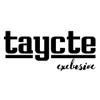Clear Labs is out to modernize and bring transparency to the food industry using next-generation genome sequencing and big data analytics. Co-founders Sasan Amini, CEO (pictured above), and Mahni Ghorashi, CMO, want to see the food industry become proactive in testing food to ensure both safety and accurate labeling. Current testing practices are generally reactive, with specific testing only after issues surface, primarily related to food safety.
A new testing approach
Clear Labs launched out of stealth mode in September when it received $6.5 million in funding. Prior to the public launch, the company, founded in 2013, built what it claims is the world's largest molecular database of food genetic markers called DNA barcodes. The company collected and tested most of the food available on supermarket shelves in the San Francisco Bay area.
With the September launch came the private beta of Clear View, the company's testing and analytics product for food retailers and manufacturers. Clear View combines genetic testing with big data analytics. Companies can use testing to verify the quality and content of foods, while the analytics provide insights and trends not available with traditional food testing.
About a dozen companies, yet to be named, are participating in the beta. The companies are evenly divided between food manufacturers and retailers, primarily for use with private label brands. Although no food ingredient companies are yet participating, the technology is applicable to both raw materials and finished products. "Testing can help raise the standard and quality throughout the supply chain," says Ghorashi.

Optimizing supply chains is one of the big benefits Clear Labs sees for food companies using Clear View. Companies can use the test results to know exactly what suppliers are providing. Amini notes that with processed ingredients, such as a spice blend, the food manufacturer cannot identify individual components. Testing identifies the molecular composition of ingredients to make sure they match expectations.
Clear View analytics also benchmarks suppliers and puts them in categories, giving a view of a supplier in category-wide context. Over time, the data can rank the best suppliers. In addition, aggregate data can be used to look for trends or identify common seasonal problems or pathogens. For example, if the analytics identify over time that specific ingredients are more likely to be contaminated, a food manufacturer can put in more checkpoints to ensure the safety of ingredient.
In addition to the DNA testing, Clear View can integrate testing for items without DNA, such as hormones, antibiotics, heavy metals and pesticides.
Clear Food
Clear Labs announced its initiative Clear Food Oct. 22 , an online food guide for consumers that will feature monthly reports. For its first published report Clear Food analyzed 345 hot dogs and sausages and found that 14.4% had problems, including substitutions and hygienic issues, while also noting a number of manufacturers are producing quality products.
CNN noted that Clear Lab's techniques are proprietary, which raises questions for outside experts about the company's results. Amini acknowledged this concern as valid and pointed out the company is actively working on publishing results in professional journals. The first article appeared in the October 2015 issue of the journal "Food Control."
"We use the same industry-standard hardware and software that is used in the most advanced clinical genomics labs to sequence and analyze human DNA, but we have developed means of speeding the process for food testing, and ensuring accuracy by baselining results against a canonical database of food DNA," says Amini. The company processes all samples in two independent replicates. If unexpected, but inconclusive, test results appear, the company sends the results to a third-party sequencing lab for further validation.
What's next? "Every day the technology is becoming better, faster, cheaper. We'll maybe five to seven years from a mobile sequencer that can be integrated with a smart device so the consumer can do this type of analysis at the grocery store, at home, in a restaurant," says Ghorashi. "We see the food industry at a tipping point, and we hope the information we're providing to the industry will help raise the bar and institute a new standard in quality."









